RARE! WWII Operation Cartwheel Solomon Islands Campaign U.S. Pilot Solomon Islands Mission Target Map











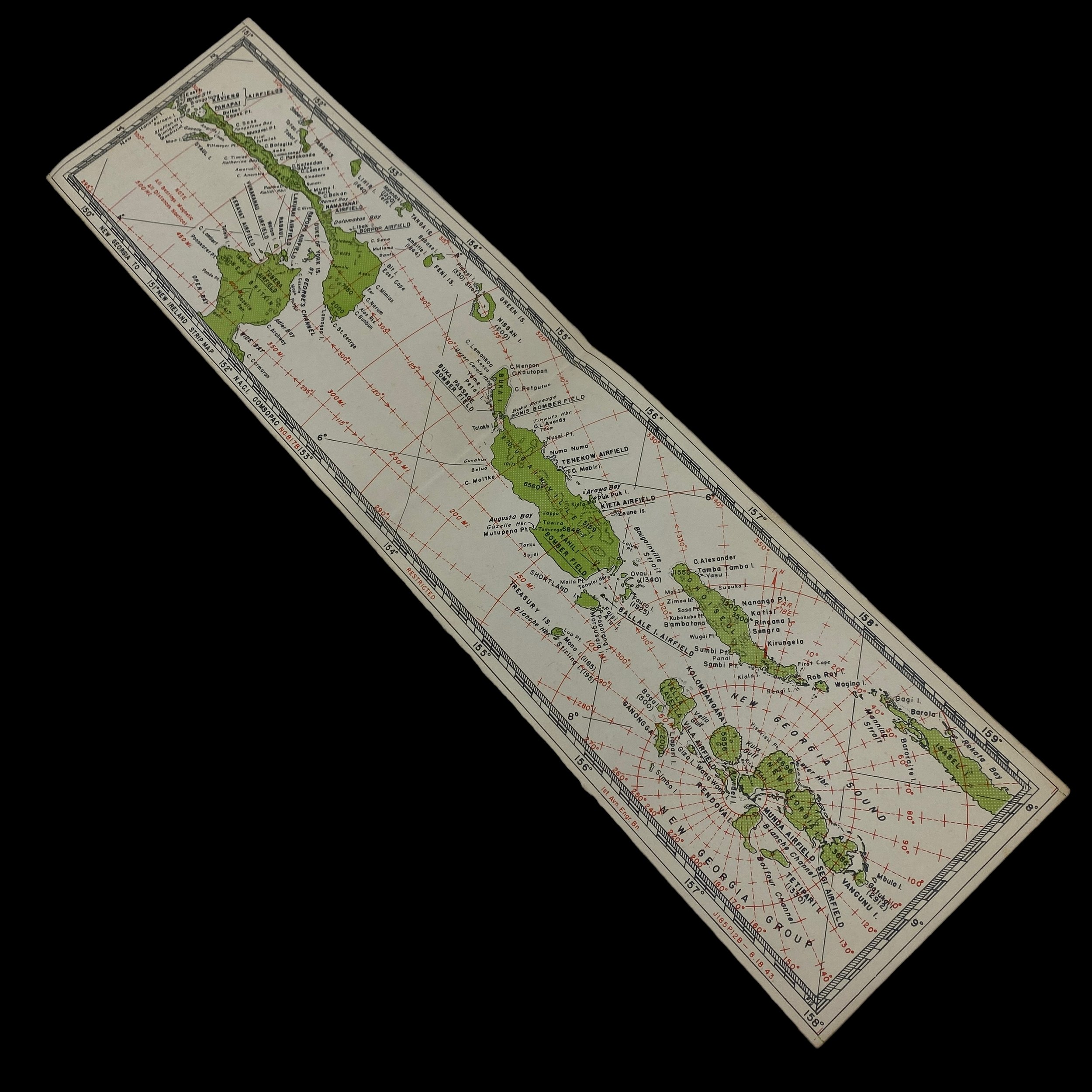




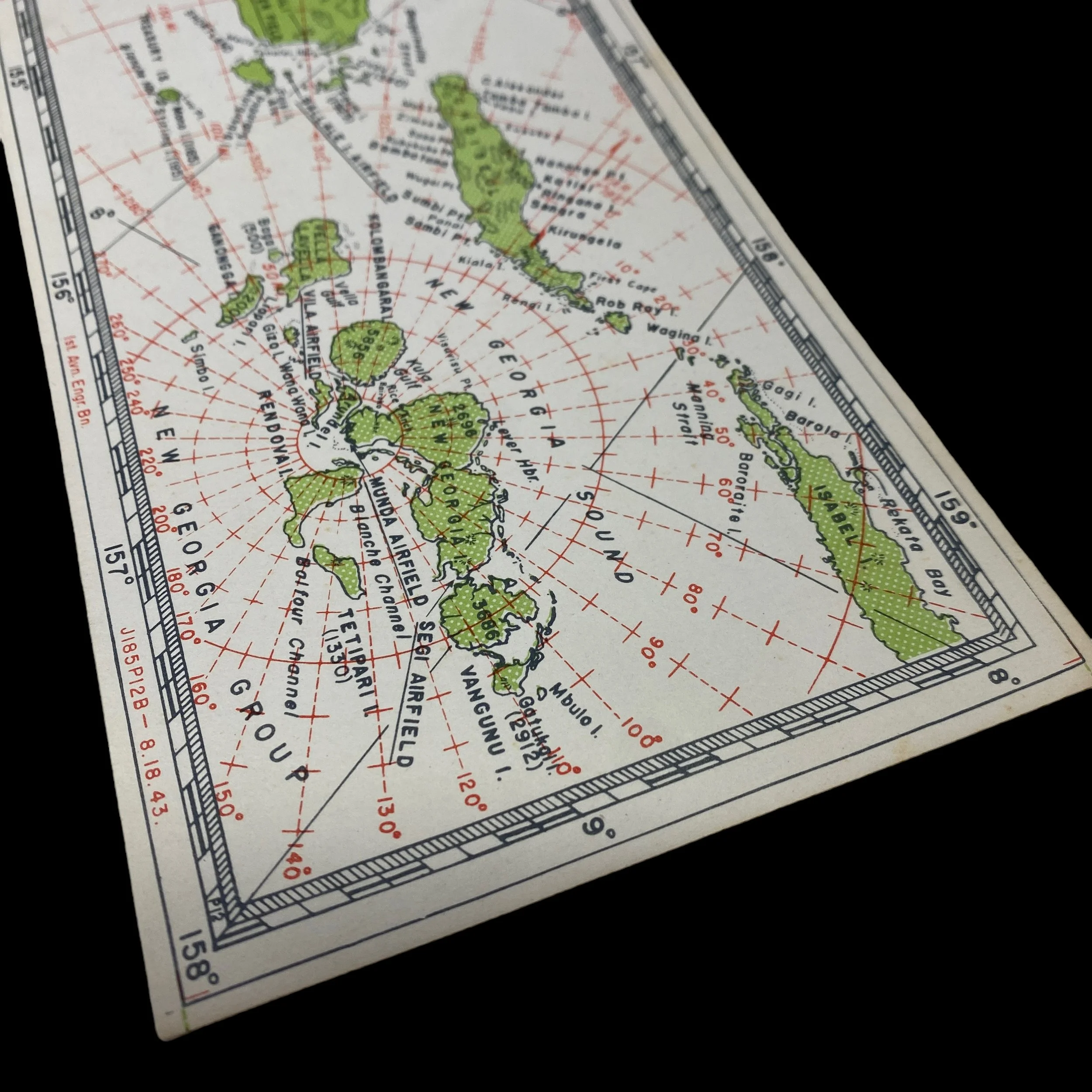


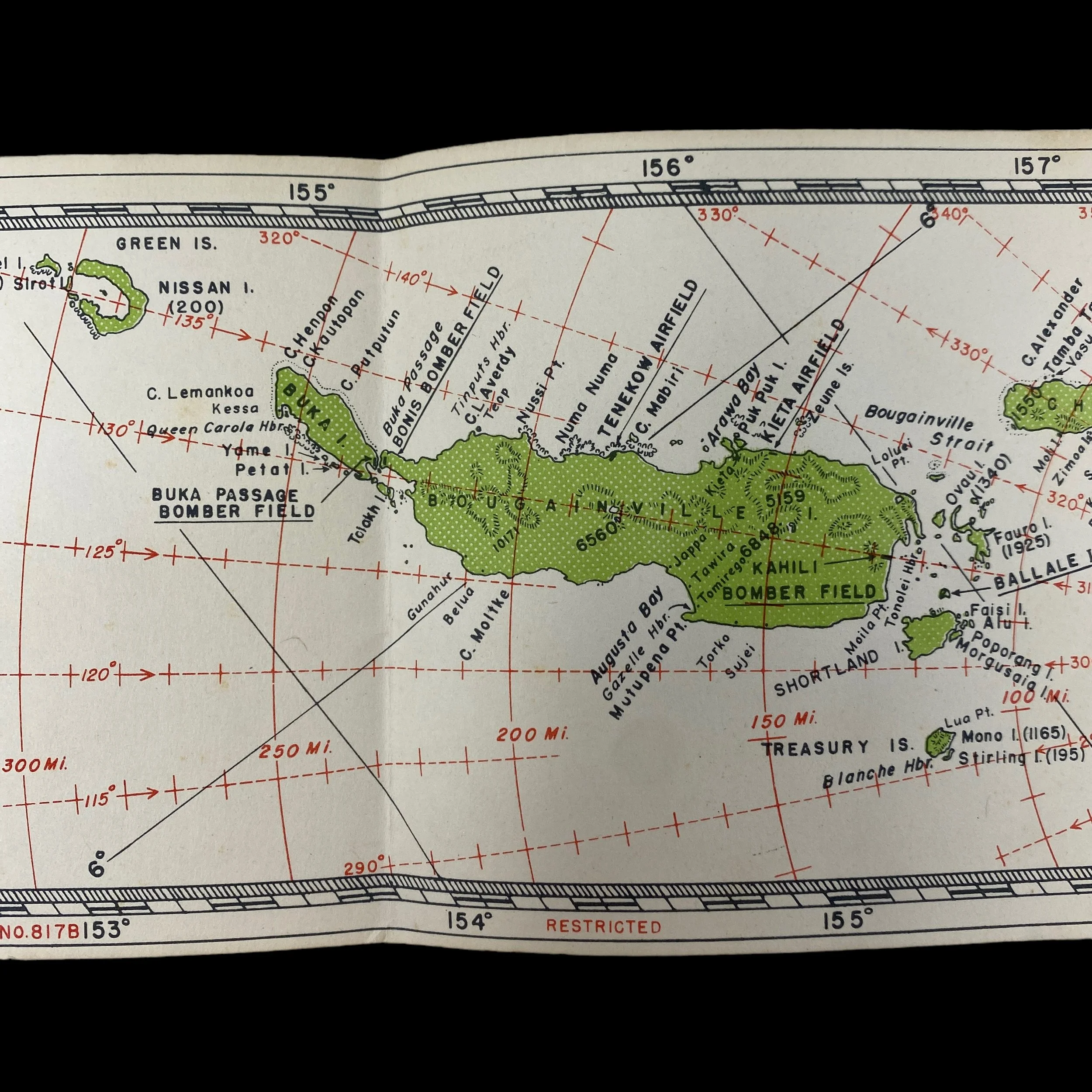
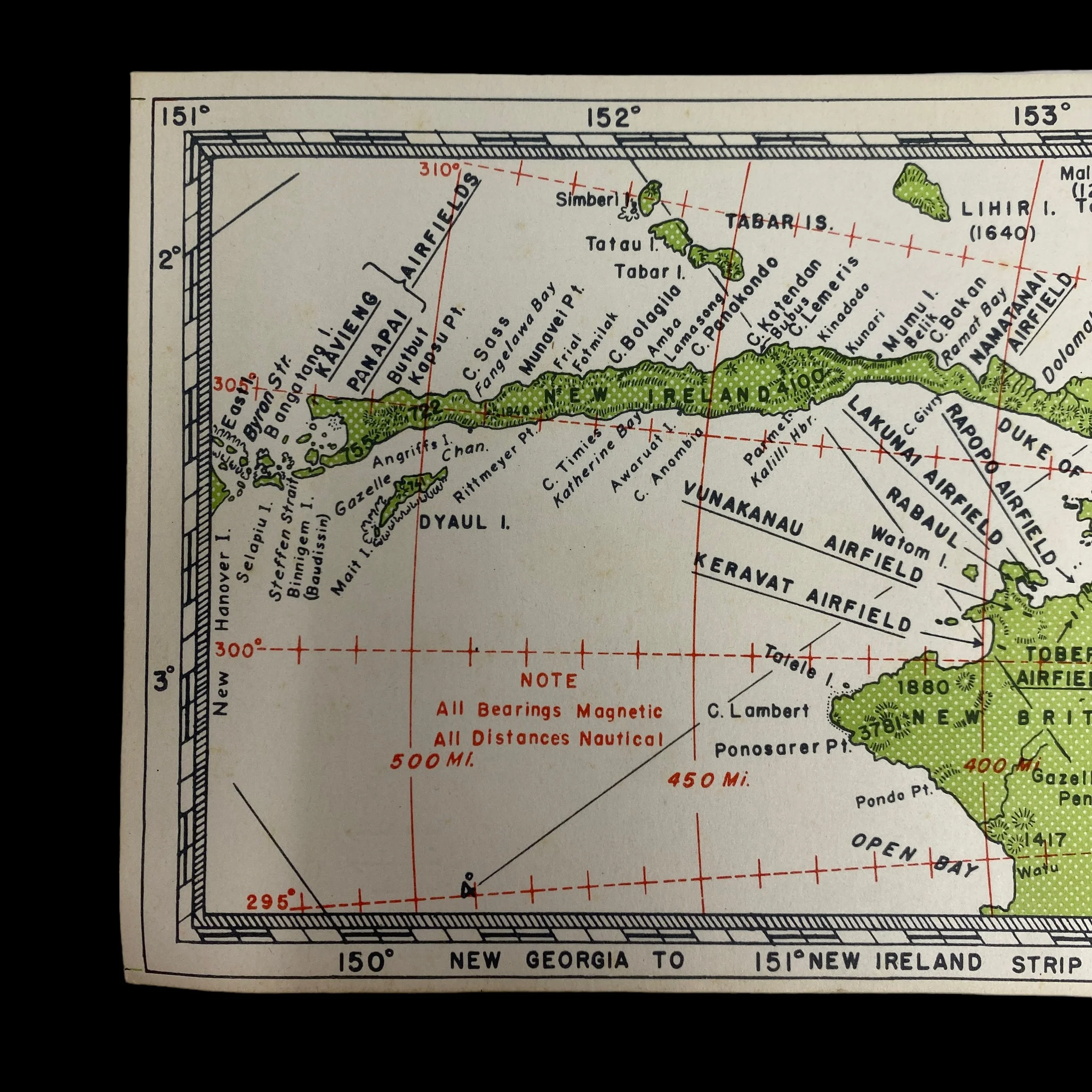


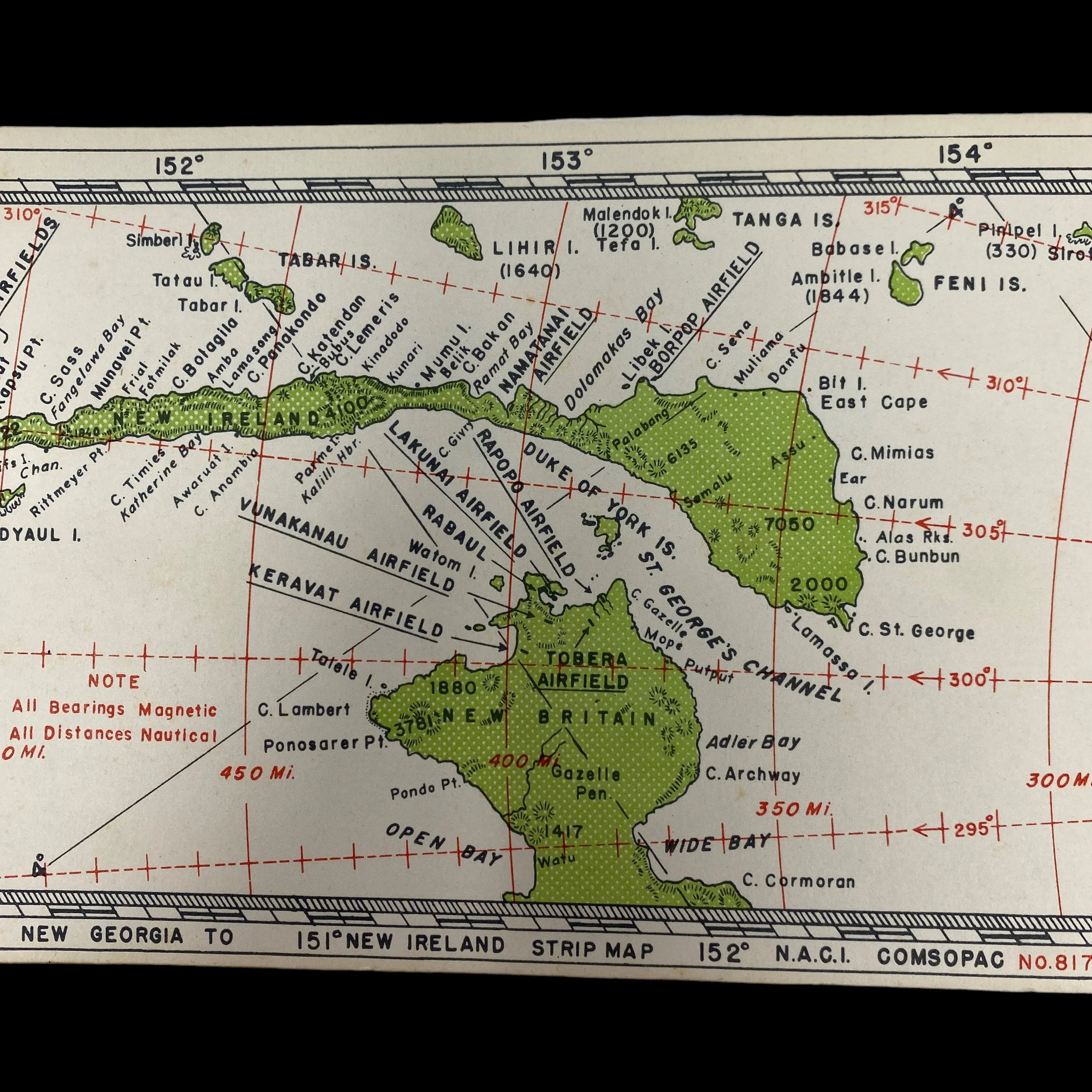


RARE! WWII Operation Cartwheel Solomon Islands Campaign U.S. Pilot Solomon Islands Mission Target Map
Comes with C.O.A.
This very rare and museum-grade ‘RESTRICTED’ Pacific Theater operations air navigation map was used during the Allied air attacks during Operation Cartwheel. Operation Cartwheel (1943–1944) was a major military operation for the Allies in the Pacific Theater of World War II. Cartwheel was an operation aimed at neutralising the major Japanese base at Rabaul. The operation was directed by the Supreme Allied Commander in the South West Pacific Area (SWPA), General Douglas MacArthur, whose forces had advanced along the northeast coast of New Guinea and occupied nearby islands. Allied forces from the South Pacific Area, under Admiral William Halsey, advanced through the Solomon Islands toward Bougainville. The Allied forces involved were from Australia, the Netherlands, New Zealand, the US and various Pacific Islands.
The Bougainville campaign was a series of land and naval battles of the Pacific campaign of World War II between Allied forces and the Empire of Japan, named after the island of Bougainville. It was part of Operation Cartwheel, the Allied grand strategy in the South Pacific.
The campaign took place in the Northern Solomons in two phases. The first phase, in which American troops landed and held the perimeter around the beachhead at Torokina, lasted from November 1943 through November 1944. The second phase, in which primarily Australian troops went on the offensive, mopping up pockets of starving, isolated but still-determined Japanese, lasted from November 1944 until August 1945, when the last Japanese soldiers on the island surrendered. Operations during the final phase of the campaign saw the Australian forces advance north towards the Bonis Peninsula and south towards the main Japanese stronghold around Buin, although the war ended before these two enclaves were completely destroyed.
This extremely rare panoramic type WWII combat navigation map notes targets of Japanese airfields on BOUGAINVILLE, NEW GEORGIA, NEW BRITAIN, & NEW IRELAND. Some of the most famous air target and airfield of the Operation Cartwheel Bougainville Campaign are noted such as KAHILI AIRFIELD, TOBERA AIRFIELD, KAVIENG AIRFIELD, & PANAPAI AIRFIELD.
As per military classification guidelines at the time, it states, “It is recommended that "Top Secret" material - Operation Plans and Orders - be reclassified downward to "Secret or Confidential" prior to the start of an operation by a sufficient length of time to permit of adequate and timely distribution to subordinate officers and pilots concerned. Only when in that area of combat theater can maps, reports, and plans be re-classified as “Restricted” to be used in combat and in the field.”
This map was specially created to be used by U.S. pilots operating during Operation Cartwheel and to be carried in the aircraft to help pilots navigate to their designated target areas.
U.S. Pilots During Operation Cartwheel:
During World War II, United States pilots and aircraft played a crucial role in the Allied victory. One significant operation that exemplified the skill and bravery of these pilots was Operation Cartwheel, which was a series of coordinated campaigns to isolate and capture the major Japanese bases in the Pacific.
One of the key figures in Operation Cartwheel was US Army Air Forces Major General George Kenney, who served as the commander of the Fifth Air Force and played a crucial role in the planning and execution of the operation. Kenney was known for his innovative tactics and his ability to adapt to the unique challenges of the Pacific Theater.
One of the most important elements of Operation Cartwheel was the use of long-range bombers and fighters to neutralize Japanese air power and interdict their supply lines. The B-24 Liberator and B-29 Superfortress were among the main bombers used in the operation, and they proved to be highly effective at hitting targets deep in enemy territory. The P-38 Lightning and P-47 Thunderbolt were also crucial to the operation, serving as both fighters and ground attack aircraft.
In addition to the use of air power, Operation Cartwheel also involved amphibious landings and ground assaults by Allied troops. The US Navy played a vital role in these operations, with aircraft carriers launching waves of fighter and bomber sorties to support the ground forces.
One of the most significant battles of Operation Cartwheel was the Battle of Papua New Guinea, in which Allied forces sought to capture the key Japanese base at Lae. The battle was characterized by brutal jungle fighting and intense air battles, with US pilots facing off against skilled Japanese pilots and anti-aircraft artillery. Despite facing heavy resistance, the Allies were ultimately able to capture Lae and other key bases in the region, paving the way for the eventual Allied victory in the Pacific.
Overall, Operation Cartwheel was a testament to the skill and bravery of US pilots and aircraft during World War II. These courageous men and women played a crucial role in the Allied victory and helped to turn the tide of the war in the Pacific.